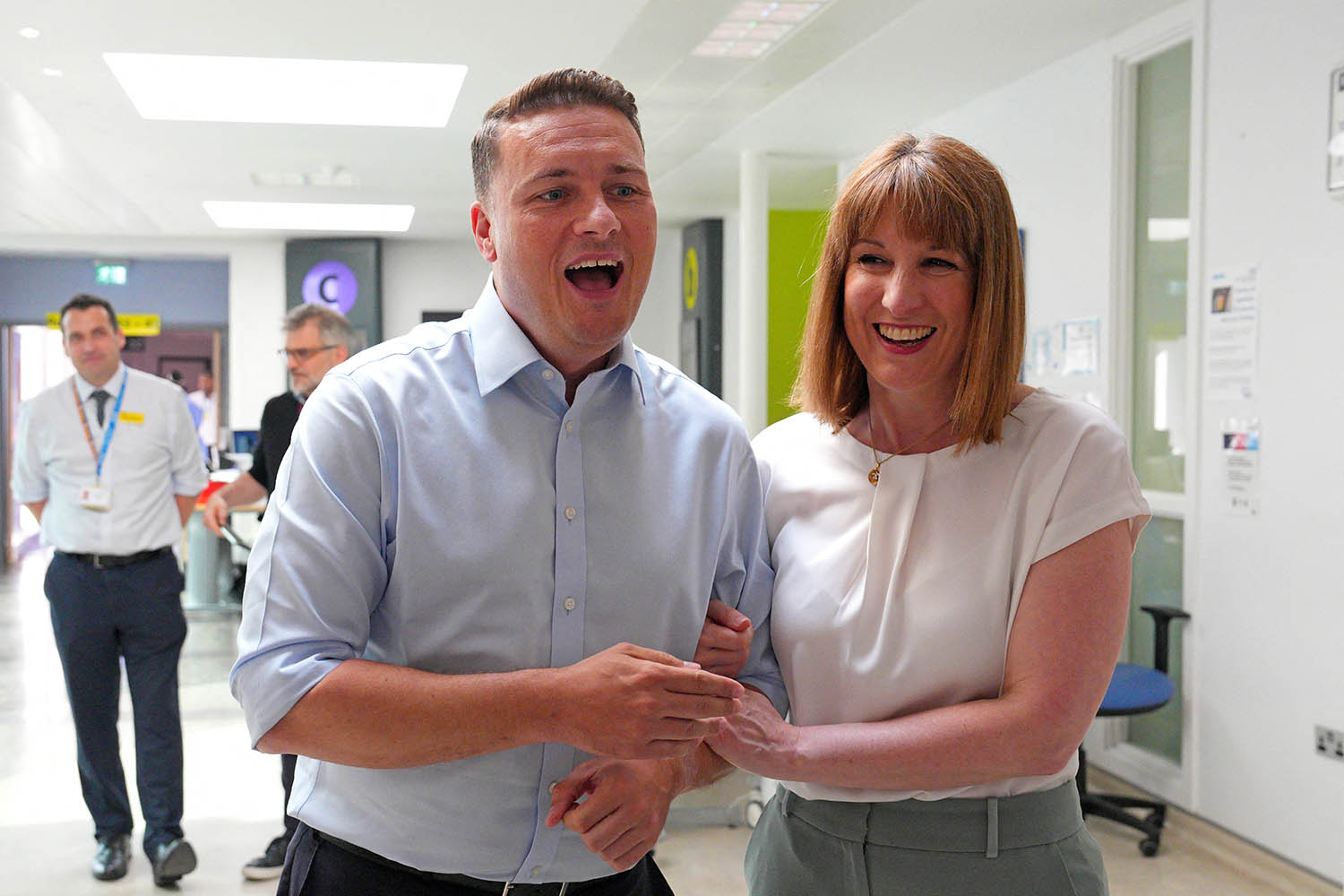The health secretary, Wes Streeting, will soon announce his long awaited 10-year plan for the NHS. We know it will talk about “three shifts”: from hospitals to communities; from sickness to prevention; and from analogue to digital services.
Few would argue with the ambition. Clearly, it would be preferable if fewer people required expensive hospital treatment. The problem is that the last dozen or so NHS plans, stretching back to the mid-2000s, have all said much the same thing and it hasn’t happened. The 2006 white paper used almost the same phrasing, and yet here we are with record waiting lists and public satisfaction at record lows.
As Lord Darzi said in his NHS review last year: “Since at least 2006, and arguably for much longer, successive governments have promised to shift care away from hospitals and into the community. In practice, the reverse has happened.”
When an organisation continually follows the inverse of its stated strategy, there is little point restating that strategy without explaining why it will be different this time.
Part of the problem is that money intended for long-term shifts is often diverted to managing immediate crises. The Blair government was focused on rescuing the NHS from the mess it was in at the turn of the millennium, when a winter crisis left a single free intensive care bed in the whole country. All the focus was on cutting waiting lists and A&E waiting times, but this meant resources going into hospitals rather than community and preventative care.
Related articles:
Part of the problem is that money intended for long-term shifts is often diverted to managing immediate crises
There was a window to shift things in 2011, when waiting lists were at their lowest and voter satisfaction with hospitals at an all-time high. Unfortunately, the combination of George Osborne’s funding squeeze – the tightest years in NHS history – and Andrew Lansley’s disastrous reforms meant the opportunity was wasted. Not only did the coalition’s restructuring waste precious time and money, it also led to the loss of thousands of experienced managers.
As a result, waiting lists were rising before the pandemic hit, and Jeremy Hunt’s attempts to reorient the system to prevention and community were undermined by the need to respond. Then Covid blew everything apart. When it hit, hospitals were already running well over recommended capacity, unlike in other European countries that managed more effectively. The system was overwhelmed and millions of appointments were cancelled, causing huge long-term damage.
For several decades, successive governments had been reducing the number of beds in hospitals in the hope more care would shift elsewhere. But this unjustified optimism has left us with far too few beds – fewer per head than almost any other wealthy country. The then NHS chief executive, Simon Stevens, acknowledged this in 2019. One of the main causes of the current lengthy waiting times, both for hospital appointments, and A&E, is the lack of available space – something exacerbated by creaking social care provision that leaves many older patients stuck in hospital waiting to be moved elsewhere.
There has been a frustrating reluctance from successive governments to add more beds, partly because of the expense, but also out of a belief that adding too many will undermine the push to keep people out of hospital. Yet the refusal to do so makes it much harder to end the sense of crisis in hospitals and get the system to a place where it can shift attention.
Because of this and despite the likely focus of Streeting’s 10-year plan it’s hard to see how he can avoid, once again, focusing on hospitals over the next few years. This has been implicitly acknowledged in the government’s adoption of very similar waiting time targets to the ones eventually achieved by New Labour. Making progress on these simply has to be a priority because they, along with the ability to make a GP appointment, are what voters notice. If the public don’t see change Labour are going to lose one of their best arguments for a second term.
Nor does Streeting have much money to play with. It’s true the NHS, as usual, got a better settlement in this month’s spending review than any other department. But it’s still less per year than in the last parliament, and much lower than the rises during the Blair years when waiting lists were last brought under control. Health services around the world are getting more expensive at much the same rate, partly because of older populations, but mainly because of better drugs and treatments that, once discovered, create new demand.
The NHS could certainly be more efficient, but productivity is now going up after a big dip in the years immediately after the pandemic, when tens of thousands of doctors and nurses were hired in a panic. It’s just not enough to counter the wider trends. Most hospital trusts have set deficit budgets and are scrambling for savings, mainly in staff costs.
The government’s scrapping of NHS England, and decision to slash staff numbers at regional management level in half, could cut costs but there doesn’t seem to be much of a plan as to how to do it, leading to a big opportunity cost and a big hit to morale as management tries to reorganise.
On the plus side, a significant sum has been put aside to invest in technology – particularly the NHS app and patient record systems. This could make a difference but it will take time to develop, and the health department doesn’t have the best of records with large-scale IT procurements. Much hope is being invested in the ability of AI to provide a big productivity boost but it’s still unclear how much of a difference it will make, and underlying IT systems are often too antiquated to take full advantage. It’s a bit like trying to install Call of Duty on an Atari.
Streeting’s best bet is to accept he will have to focus on hospitals in the short term. That doesn’t mean giving up on the long-term strategy but it would make more sense, given the lack of resources, to try to get the system in shape to pursue it in a second term by investing now in IT and small-scale testing of new strategies. Regional mayors can be allies in this given prevention budgets are still held at local government level.
Trying to do everything all at once is likely to end up with the same lack of prioritisation that has undermined previous efforts. Let’s see if Streeting’s plan acknowledges the extent of the challenge and this history of previous failures.
Photograph by Carl Court/AFP/Getty Images


